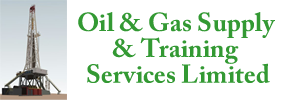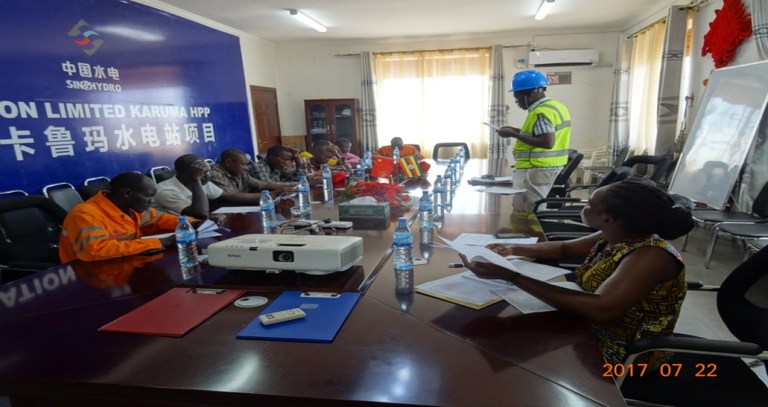- 2 weeks
- 4-6 hours of work / week
National General Health and Safety Certificate
The course has Started and Registration is going on!
Course Brief
Module 1 – What is work health and safety?
Participants successfully completing this module should be able to:
- Define National General Health and Safety Certificate (GHS)
- Why GHS is important in the workplace
- Potential consequences of breaching GHS laws
- Roles and responsibilities in managing workplace GHS.
Section 1.1 – Welcome
A brief orientation to the topics covered in the module.
Section 1.2 – Defining GHS
Provides a broad definition of Work Health and Safety.
Section 1.3 – Why GHS is important
Underlines the importance of GHS and encourages the learner to reflect on GHS in their own Environment, including inside and outside of work.
Section 1.4 – Breaking GHS laws
Outlines the legal responsibilities of employers and employees, explains how laws can be enforced and answers the question: What happens when breached.
Module 2 – Managing GHS risks
Participants successfully completing this module should be able to:
- Outline the risk management process
- Explain how to identify hazards and determine the risks that they pose
- Explain how to implement measures to control risks
- Describe how to review and monitor control measures.
Section 2.1 – Welcome
A brief orientation to the topics covered in the module.
Section 2.2 – Defining risk management
Provides a General definition of risk management, and then explores the specific elements of Risk management in the context of GHS. Explains the difference between a prescriptive approach and a performance-based approach. Considers what may constitute a ‘hazard’. Introduces the three stages of risk management.
Section 2.3 – Risk management stage 1
Risk assessment stage 1 is about risk assessment; i.e. identifying hazards and determining the risks that they pose.
Section 2.4 – Risk management stage 2
Risk assessment stage 2 is about risk control; i.e. where necessary, putting in place measures to control risks.
Section 2.5 – Risk management stage 3
Risk assessment stage 3 involves continually reviewing and monitoring the first two stages introduced in prior sections.
Section 2.6 – Summary
Briefly restates the objectives of the module to reinforce learning.
Section 2.7 – Assessment
Provides a concise online assessment comprising multiple choice questions to evaluate participants’ understanding of key concepts of the module.
Module 3 – Preventing accidents at work
Participants successfully completing this module should be able to:
- Explain what an accident is and identify some unconstructive attitudes towards accidents
- Explain the relationship between major accidents, minor accidents and near-misses (incidents)
- Identify the direct and indirect causes of accidents
- Explain why incidents, including accidents and near-misses, need to be reported.
Section 3.1 – Welcome
Provides a brief orientation to the topics covered in the module.
Section 3.2 – Defining accidents and incidents
Considers the difference between accidents and incidents. Introduces the concept of minor accidents and near misses, and why the occurrence of these should be considered an indicator of potential for more serious accidents.
Section 3.3 – Accidents and near-misses
Looks at the causes of accidents and near misses, and encourages the learner to consider
the impact of workplace attitudes to dealing with these occurrences.
Section 3.4 – Causes of accidents
Asks the question: why do we need to know about hazards? And what can be done about hazards once they are identified? The focus is on eliminating or minimizing the impact of hazards.
Section 3.5 – Reporting accidents and incidents
Explains the importance of reporting accidents, near misses, and other incidents. Also covers the ‘how-to’ of incident and accident reports.
Section 3.6 – Summary
Briefly restates the objectives of the module to reinforce learning.
Section 3.7 – Assessment
Provides a concise online assessment comprising multiple choice questions to evaluate participants’ understanding of key concepts of the module.
Module 4 – Preparing for fire and other emergencies
Participants successfully completing this module should be able to:
- Define and identify the different types of emergencies that may be encountered
- Outline the roles and responsibilities of managers and workers in emergency management
- Explain how to prepare for an emergency
- Explain how fires start and how they can be prevented.
Section 4.1 – Welcome
Provides a brief orientation to the topics covered in the module.
Section 4.2 – Defining emergencies
Provides a general answer to the question: What are emergencies? Provides a list of different types of emergency that may occur in the workplace.
Section 4.3 – Roles and responsibilities
Looks at the roles and responsibilities that apply to employees, management, and company directors. Explains what the law requires of employers. Considers what happens if responsibilities are breached.
Section 4.4 – Preparing for an emergency
Explains the fundamental importance of planning in preparations for emergencies. Promotes the creation of an emergency plan and the proper communication of that plan to all employees.
Section 4.5 – Fires
Considers one of the most common types of emergency, exploring how fires start and spread, what are potential fuel sources, how hazards can be reduced and what to do when a fire is encountered.
Section 4.6 – Summary
Briefly restates the objectives of the module to reinforce learning.
Section 4.7 – Assessment
Provides a concise online assessment comprising multiple choice questions to evaluate participants’ understanding of key concepts of the module.
Module 5 – Ensuring a safe physical environment
Participants successfully completing this module should be able to:
- Arrange office equipment to maximise safety and comfort
- Recognize how to avoid injuries from manual tasks.
Section 5.1 – Welcome
Provides a brief orientation to the topics covered in the module.
Section 5.2 – Office safety
Introduces two areas that cause many workplace injuries; the office environment and manual tasks. Provides recommendations for good ergonomics and proper workplace configuration.
Section 5.3 – Manual tasks
Gives a definition of ‘manual tasks’, and encourages the learner to reflect on the manual tasks that they are involved with. Outlines the risk factors and common types of injury associated with manual tasks.
Section 5.4 – Summary
Briefly restates the objectives of the module to reinforce learning.
Section 5.5 – Assessment
Provides a concise online assessment comprising multiple choice questions to evaluate
participants’ understanding of key concepts of the module.
Module 6 – Dealing with common workplace hazards
Participants successfully completing this module should be able to:
- Identify the dangers of 4 common workplace hazards and explain how to deal with them
- Identify the dangers of 3 wellbeing issues and explain how to deal with them.
Section 6.1 – Welcome
The final module in the course addresses the dangers of some common workplace hazards and wellbeing issues and how to deal with them.
Section 6.2 – Common workplace hazards
This section covers the four most common workplace hazards, considering risk management issues and giving examples of each.
Section 6.3 – Wellbeing issues
This section covers three major issues relating to workers’ wellbeing: alcohol and drugs, Smoking and shiftwork. Examines the impact of each issue on workers and the workplace.
Section 6.4 – Summary
Briefly restates the objectives of the module to reinforce learning.
Provides a concise online assessment comprising multiple choice questions to evaluate participants’ understanding of key concepts of the module.






